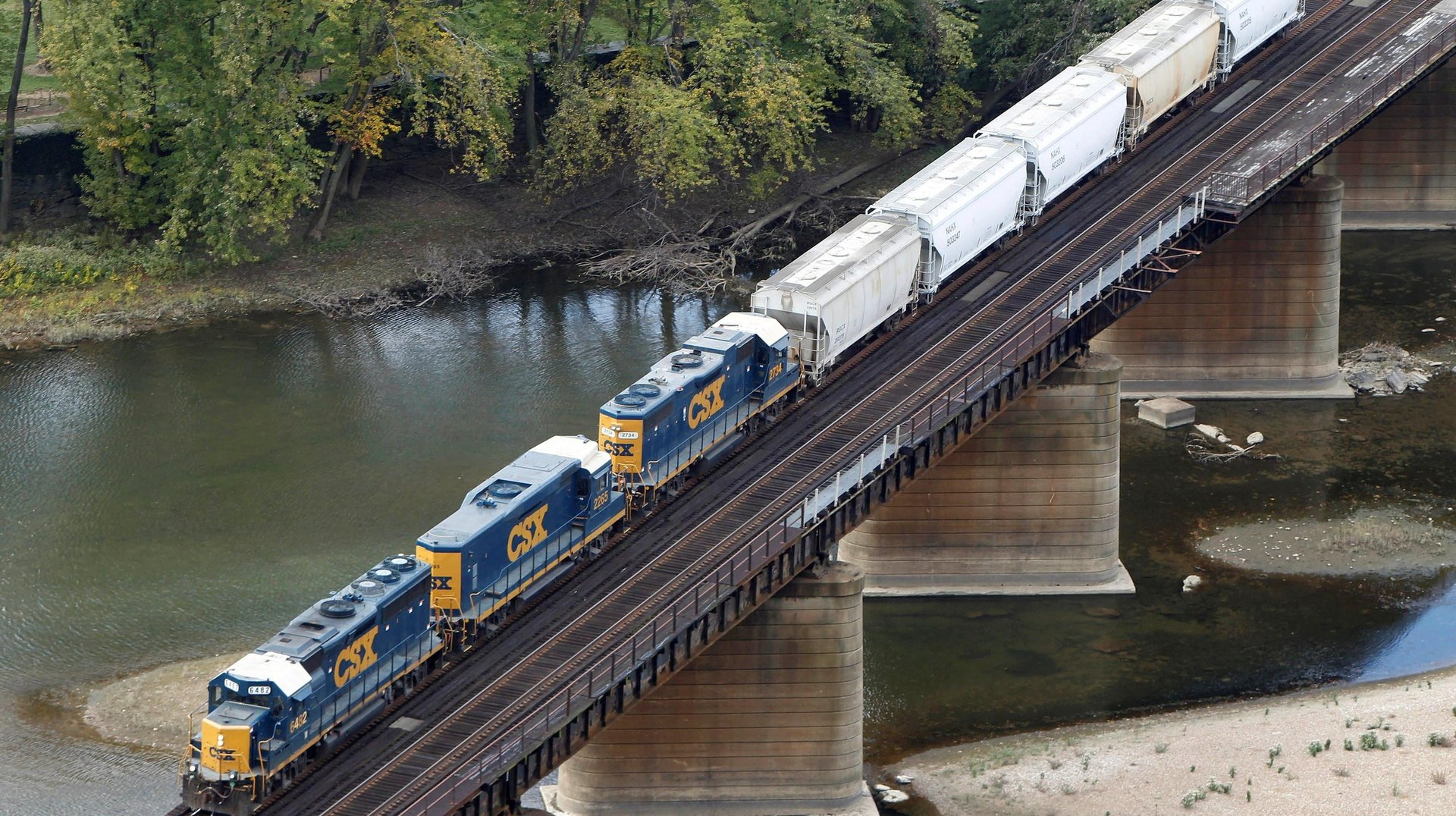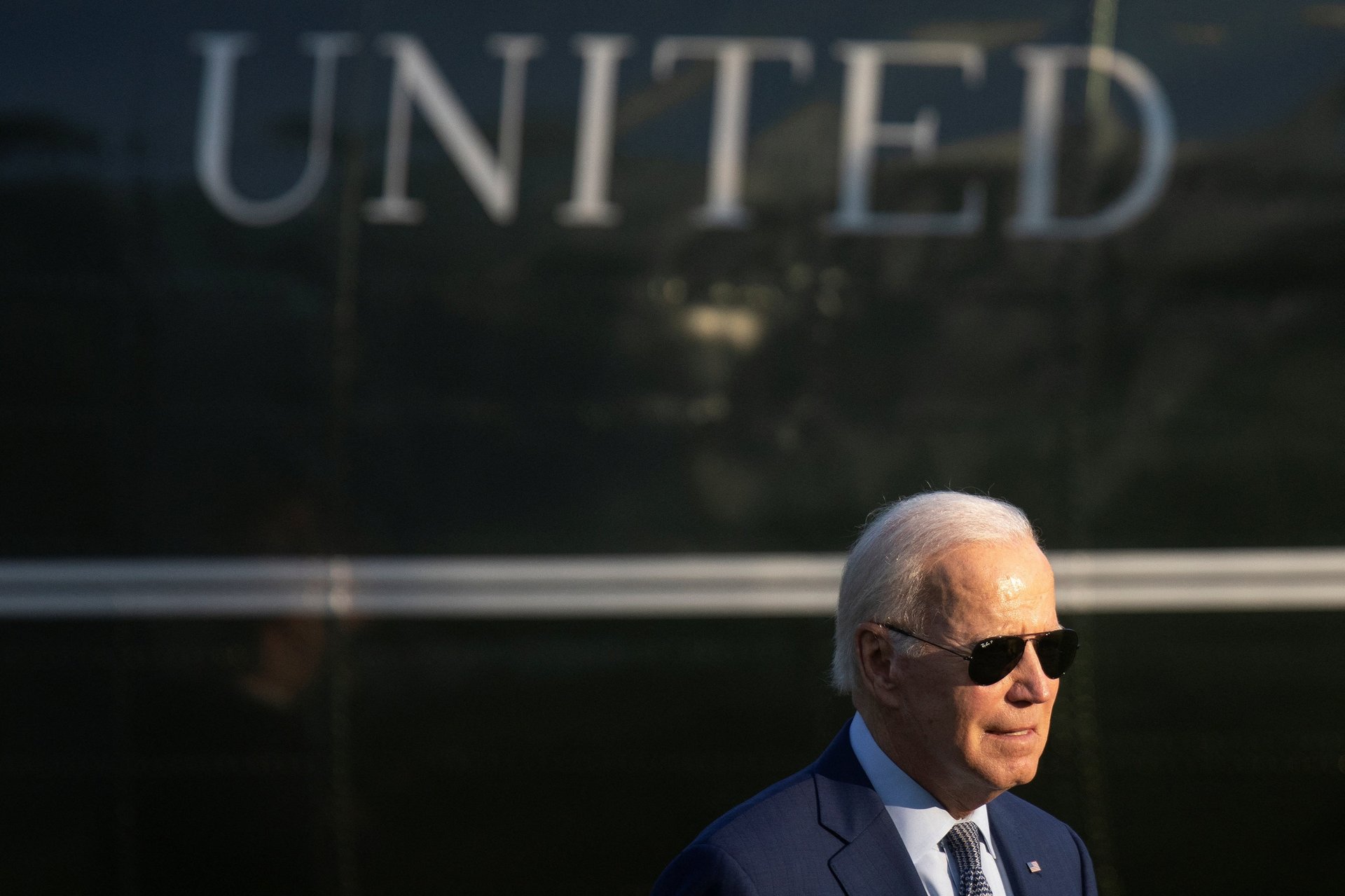Unions reach a tentative deal, averting major rail strike
US president Joe Biden celebrated the 11th-hour agreement.

America’s biggest railroads have reached a tentative agreement with union workers.
Until yesterday (Sept. 14), nine unions had agreed to a deal—two have ratified the agreement, one has rejected it—while three others were still sitting at the bargaining table. But today (Sept. 15), US president Joe Biden celebrated a tentative agreement that “will keep our critical rail system working and avoid disruption of our economy,” the Associated Press reported.
Core to unions’ grievances are attendance policies that promote unpredictable and inflexible work schedules, and penalize workers for taking days off when they’re sick or tending to a family emergency.
Had the railroads and workers remained stuck at an impasse at the end of the day, union workers would’ve gone on strike tomorrow (Sept. 16).
Quotable
“This unreasonable policy which keeps locomotive engineers and other railroaders on call day after day, around the clock, has caused hundreds of BNSF’s employees to quit and it has made recruitment of new employees a nightmare...Not only is the supply chain failing, but this abusive and punitive attendance policy is breaking apart families and causing locomotive engineers and other railroaders to come to work dangerously fatigued. Enough with the fluff.”
—BLET national president Dennis Pierce’s statement from May 16, 2022
By the digits
12: the number of labor unions, small and big, that threatened to strike
57,000: the number of conductors and engineers represented by two major unions—Brotherhood of Locomotive Engineers and Trainmen (BLET), and SMART Transportation Division—that are still negotiating a deal
40%: percentage of US imports moving along American freight rail
467,000: long-haul trucks that would be needed daily to replace railroads (PS: there aren’t enough trucks or drivers to meet this demand)
70%: the share of miles traveled by Amtrak trains that are on tracks owned by freight railroads
$2 billion: the estimated daily cost to the economy of shutting down the freight railroad system
Person of interest

All eyes were on president Joe Biden to make good on his promise to be the “most pro-union” US leader in history. But of course, he has to keep the best interests of the American consumer in mind, too.
In July, an emergency board Biden established to avert a strike proposed a five-year deal that’s retroactive to 2020 which includes:
- a cumulative 24% pay hike
- an overall $5,000 in bonuses
- one additional paid leave day a year
- higher health insurance contributions
By instating this committee, he set off a 60-day “cooling off” period which ends tomorrow.
Domino effect
A strike would cause the snarls in the nation’s already-troubled supply chain to grow multifold, exacerbating inflation.
The country’s energy and drinking water supply would be in jeopardy due to delays in critical deliveries of chlorine to wastewater treatment plants and coal to utility plants.
And although the conflict hits freight the hardest, commuters wouldn’t have escaped unscathed either. Already today (Sept. 15), passenger railroad service Amtrak, which runs on tracks owned and run by freight railroads, suspended all long-distance train services in anticipation of the strike.
Fun fact
Because of its large capacity, one rail car can take 300 trucks off the road.
Related stories
This story was updated after publication to reflect Joe Biden’s statement.